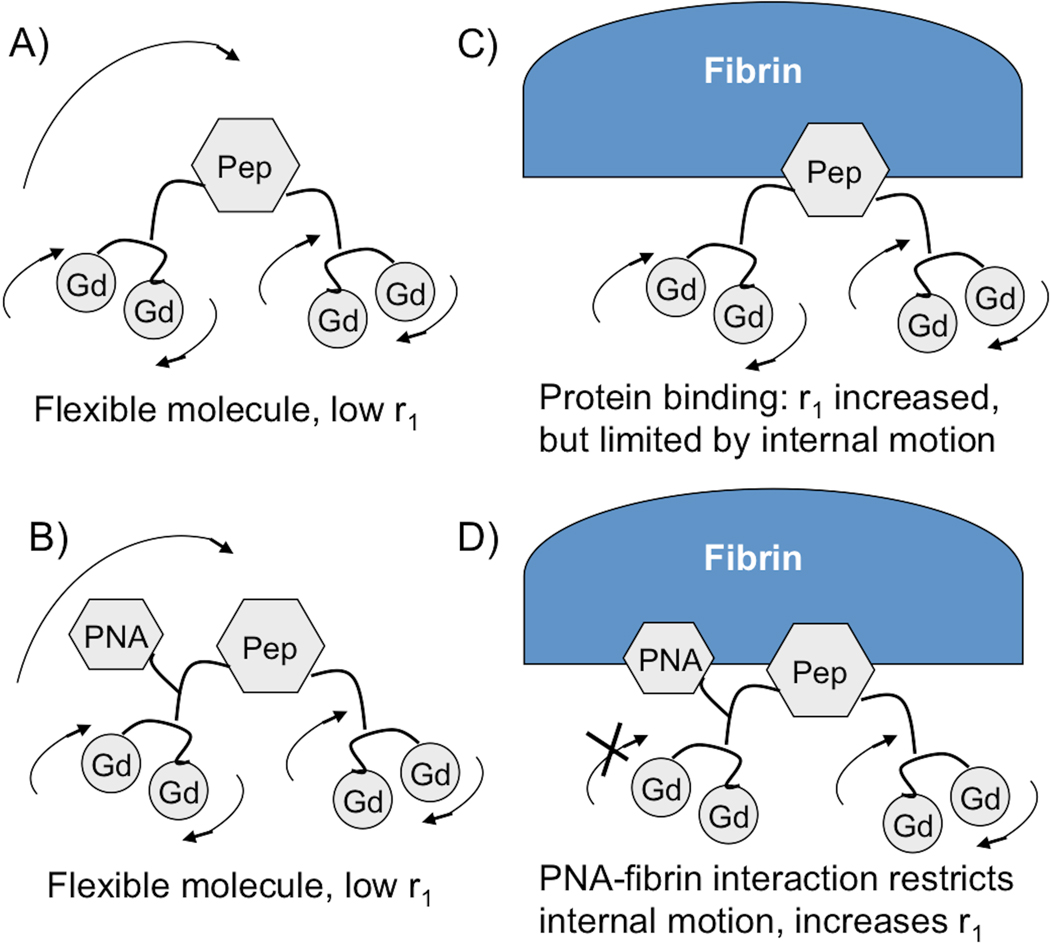Figure 1.
Mechanism of increased relaxivity by heteroditopic protein binding. A and B) In absence of protein (fibrin), molecule is flexible, undergoes fast tumbling, relaxivity is low. C) Fibrin binding reduces rotational motion and relaxivity is increased, but local motion limits relaxivity. D) Addition of second binding group PNA limits internal motion upon fibrin binding and boosts relaxivity.

